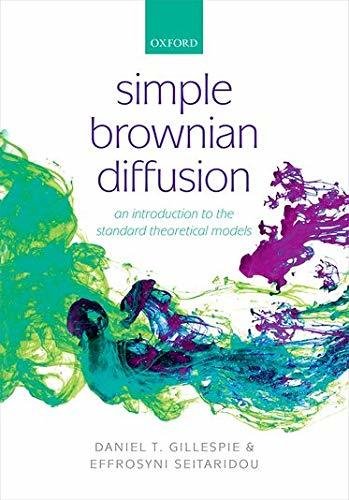A mathematically-offensive introduction to stochastic calculus and Brownian motion
Alexandre René
INM-6 Book club • 14 Jan 2022
Based on
See also



Spectral solution method for distributed delay stochastic differential equations
Alexandre René
M.Sc. thesis (Ottawa 2016)
Outline
- White noise is weird
- Basic concepts
- Brownian motion (aka Wiener process)
- Stochastic integrals
- Stochastic differentials
- Solving an SDE
- Change of variables (Itô’s lemma)
- Examples
- Ornstein-Uhlenbeck process
- (Multiplicative noise)
Also discussed:
- Itô vs Stratonovitch interprations
White noise is weird
- “White” ⇒ no correlation; \(\langle ξ(t) ξ(t')\rangle = \delta(t-t')\)
- Same power at all frequencies
- Fractal: looks the same at all scales
- \(ξ(t)\) is ill-defined: all values are explored in any finite interval. However,
⇒

- statistics can be defined;
- \(\int_0^T ξ(t) dt\) is a well defined random variable.
Closest thing:
\(ξ(t) := \frac{1}{T} \int_0^T ξ(t) dt\)
Wiener process
\( W(T) := \int_0^T ξ(t) dt\) is a Brownian motion.
Let’s assume \(\mathbb{E} \left[ \int_0^T ξ(t) dt \right] = 0\). What should \(\mathrm{Var} \left[ \int_0^T ξ(t) dt \right] \) be ?
with \(W_1, W_2\) i.i.d.
\(D=1\) ⇒
Wiener process
Diffusion constant
Wiener process
What should the distribution of \(W(T) := \int_0^T ξ(t) dt \) be ?
with \(W_k\) i.i.d.
(Wiener process)
Central limit theorem ⇒ \(W(t)\) must* be a Gaussian RV:
(Brownian motion)
Wiener process


- Brownian motion was described by Einstein in one of his four annus mirabilis papers.
- (More precisely: he computed D for particles in a fluid)
- No stochastic calculus is needed.
A solution to a stochastic diff. equation therefore take the form of a time-dependent random variable.
Stochastic integrals
we use the Riemann-Stieltjes definition of an integral:
To compute objects of the form
(Itô)
(Stratonovich)
Stochastic differentials
For our purposes, we consider only drift-diffusion processes
If
- \(X\) is Markovian
- \(X\) is continuous
the stochastic increment must be \(dW\)
(Gillespie 1996)
Reason: self-consistency to first order
(i.e. \(\sim \mathcal{N}(0, dt)\)).
then
Stochastic differentials
the stochastic increment must be \(dW\)
In
Stochastic differentials – update schemes
It is generally safer to think of \(dt\) and \(dW\) as small finite differences, rather than true differentials
A drift-diffusion SDE thus provides an update scheme:
Itô interpretation, explicit
Stratonovich interpretation, implicit
(Euler-Maruyama scheme)
Stochastic differentials – calculus rules
In the Itô interpretation, we have the following
←Itô only
Some authors (e.g. Kurt Jacobs) also write
but this is a leaky abstraction – it can lead to wrong results.
Stochastic differentials – Itô’s lemma
Given a function \(h(t, X(t))\), we have
(Itô)
(Stratonovich)
Ornstein-Uhlenbeck (O-U) process
Remark: If \(X(t)\) is Gaussian, then \(X(t+dt)\) is also Gaussian.
(A known initial condition – \(p(0, x) = δ(x-x_0)\) – counts as Gaussian.)
⇒ It suffices to solve for mean and variance.
Strategy: Obtain differential equations for the moments.
Ornstein-Uhlenbeck (O-U) process
\(= 0\) under Itô
Integration factor
Ornstein-Uhlenbeck (O-U) process
Full solution:
where
In particular, we have the stationary solution
Final remarks
- With mild assumptions compatible with a physical process, the correct white noise limit is the Stratonovich one.
- Thus one often hears that the Stratonovich form is the correct one to use for physical systems.
- A better approach may be to check for yourself how the limit works out in your case.
- Itô and Stratonovich SDE’s are easily converted from one form to the other.
- Multivariate processes are conceptually similar, but do require additional care
- (non-communativity of matrices)
- (sums of n-d Gaussians are not necessarily Gaussian)
- Langevin form
Index
A mathematically-offensive introduction to stochastic calculus
By alexrene
A mathematically-offensive introduction to stochastic calculus
- 258



